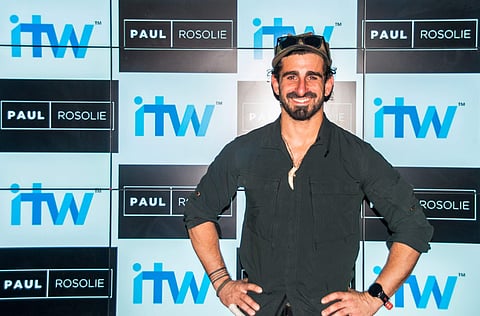

When someone meets Paul Rosolie, they would want to know how he came out alive after being swallowed by the world's largest anaconda. Who is crazy enough to face a live anaconda in the Amazon? This explorer surely is. And by the way, he definitely did not get eaten by an anaconda. Trust us. That exactly what was he wanted to prove through the Discovery's TV special Eaten Alive. "The series started out as a way to get people excited about rainforests and help the animals. We did a 6-week-long expedition and caught the longest anaconda recorded — it was almost 20 feet long and weighed over a hundred kilos. It didn't eat me and that was what I wanted to show them. Animals are not monstrous," says Rosolie who was at ITW Consulting's Bengaluru office a few days back.
This is Rosolie's fifth year in India and he has started identifying himself as a South India, almost started perfecting his Kannada, thanks to his wife Gowri Varanashi. Interesting enough, he is also writing a novel, which he says is a semi-true incident titled The Girl and the Tiger. He fondly calls it the 21st-century Jungle Book but his Mowgli is a teenage girl. "I'm excited because it's set in South India. It's a result of my five-year-long journey in India," he says, adding, "It is more from a tiger's perspective. I was inspired to write this book because a teenage girl once messaged me saying she found 3 tiger cubs. She was so compassionate."
While we got excited about the book which will hit the markets in 2019, Rosolie had a lot more to share about his interesting life. Excerpts from the conversation:
You've done a lot of work exposing illegal poaching in Indian and in the Amazon, especially by travelling with the poachers. How did you convince them that you're not a bad guy?
In the Amazon, you hear a lot about illegal poaching of jaguars, monkeys and crocodiles. I wanted to learn about that. Once I learned the local ways, I started to go out with the poachers. Everyone's scared of them. But I somehow made friends with them, went with them and had the same food as they did. It's a skill of learning local culture and more importantly, knowing how to make people laugh. And I look very dirty almost all the time. So I ask them if they would want to take me along.
Have you ever been scared after exposing the poachings?
Not really. I don't expose poachers. I show the animals being killed and forests being burned down. My interest is not singling out an individual person. People get into this because there is no other alternative. They're not really bad people. Exposing them won't really make a difference.
How did you get interested in nature and wildlife?
I was born like this. As a baby, I loved dogs and birds. When I could walk, I started chasing snakes. I always wanted to be around animals. At 18, I started working at the Amazon. I started as a research assistant.
You spend most of your time in the forests. Have you ever been scared of wild animals?
Oh yes! One time when I was in India, I was walking through a forest and a tusker chased me. He was hiding in the bushes and I missed him. He tried to kill me and I fell 12-feet down a cliff. I was initially very angry, but later, I took a lesson from that. A happy wild elephant wouldn't do that. These creatures are facing a lot of habitat destruction. This made the elephant angry. An average elephant needs at least 2 acres of forest to survive.
Man-animal conflict is a big issue, especially in India. What could be a solution to that?
This happens mainly because there's a huge distinction in our minds between us and the animals. They also have to be there in the same surrounding and that's one of the reasons behind writing The Girl and The Tiger. We need to update a lot of things. But, I'd still say that in India, there's a lot of hope. There are more than a billion people and has the most number of tigers.
Why is your first book called Mother of God?
Mother of God is a region in the Amazon where I worked. It is the part from where the rest of the Amazon originates — The mother of all creations. It is about my first solo expedition to that region. People have often confused if it as a religious book because of its title and that is why the second book just call it The Girl and the Tiger. That way, people know that it's about a girl and a tiger.
Do you have a favourite animal?
There are 500 of them. Do you want me to list all of them in alphabetical order? (Laughs)
